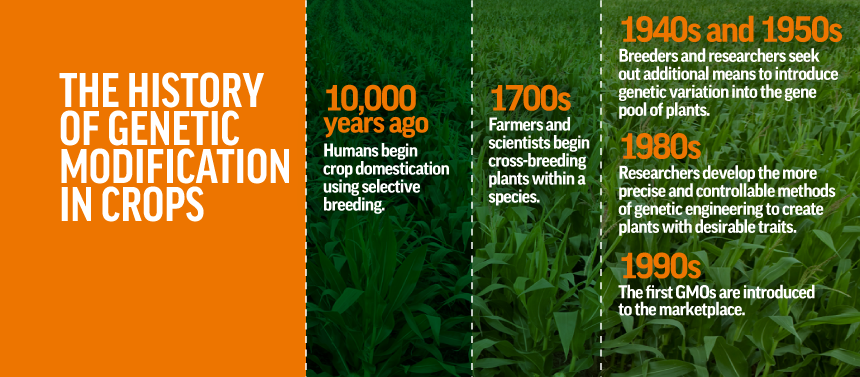Yes, GMOs Are Safe But Questions Remain
This post was originally published on Forbes on October 20, 2016.
Post written by Kate Hall. Kate Hall is managing director of the Council for Biotechnology Information and GMO Answers spokesperson.
GMO Answers launched its third annual ‘Get to Know GMOs’ month this October to answer consumers’ most pressing questions about GMOs. Throughout the month, GMO Answers is posting a series of five articles for ‘Get to Know GMOs’ month. This post is our third installment.
The scientific consensus confirms that GMOs are safe – they’ve been an integral part of our food supply for 20 years, helping farmers do more with less resources while addressing major food challenges.
However, questions still remain. According to a recent Harris Poll, 58% of adults say that they’re familiar with the term, ‘GMO’ – which reflected what we found to be true among everyday people.
Answering your questions about GMOs, no matter what they are, is at the heart of GMO Answers’ mission. A fundamental part of what we do is to go out and engage with the public – spark conversations, embrace skepticism and answer questions, even the difficult ones.
So for this year’s ‘Get to Know GMOs’ month, we took to the streets to find out how much people know about GMOs and to answer their biggest questions. While some were familiar with the science behind GMOs, others were surprised to learn the facts.
As part of ‘Get to Know GMOs’ month we also conducted a nationwide survey to find out the top 10 most asked questions about GMOs. The survey revealed a wide-range of questions, and you can take a look at the top 10 questions and answers on GMOAnswers.com.
During our man-on-the-street interviews, we found that most people aren’t opposed to GMOs, but curious about everything from the basics – what exactly is a GMO? – to effects on people’s health and the environment, and what problems they think GMOs can help solve in the future.

Although we have been using biotechnology for over 20 years, we’ve been modifying our food for millennia through techniques like domestication and selective breeding. The difference is that GM technology enables us to more precisely develop desired traits in crops, such as drought- and herbicide-tolerance and disease-resistance. Biotechnology breakthroughs have allowed us to increase crop yields, reduce waste and save threatened crops from diseases like the ringspot virus in Hawaiian papaya.
It’s important to know that GMOs are safe and to understand how these innovations are solving some of our most pressing problems around the world. For example, scientists are currently working on biotech solutions to help save Florida oranges from the deadly citrus-greening disease. Additionally, Bt brinjal in Bangladesh is improving crop yields and the lives of farmers in that region.
GMOs are an important part of a farmer’s toolbox, and future innovations in biotechnology will continue to help us address the challenges in agriculture brought on by a growing population and a changing climate.